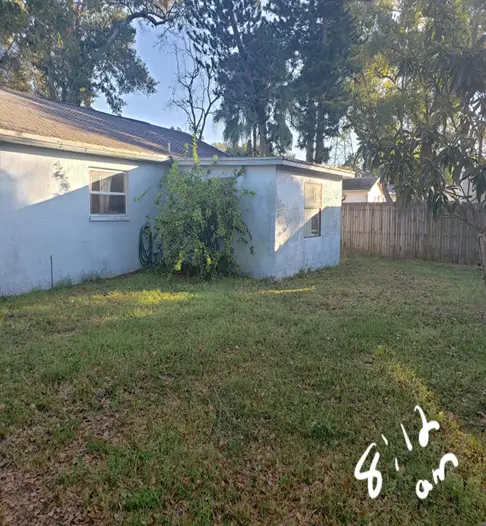When it comes to growing food, you cannot talk about healthy soil enough, so I wanted to go a little bit further in depth on how we have been able to turn our very sandy Florida soil into beautiful rich soil that we have been able to grow food in. The secret is composting or more specifically, composting in place. We also use other methods of composting that I will highlight in this post.
Disclaimer time… this method of gardening may not be for everyone. The way that we do things in our gardens may not be for everyone. We have chosen to create an ecosystem and completely transform our entire property, but that is not going to work for people who live in an HOA, condominium, or an apartment building. So, we are not saying that this is the end-all-be-all way of gardening. This is simply the way that we have chosen to do it, and it has worked out really beautifully for us in our lives.


What is healthy soil?
Healthy soil has good water holding capacity, but it doesn’t necessarily get soggy and hold water. Most edible plants do not like wet feet, so you don’t want really soggy soil. Healthy soil also has good aeration as well as good texture and structure. It also has a certain percentage of organic material and minerals.

We used to have very free draining sandy, nutrient poor Myakka sand. Similar to what you would see at the beach, but our sandy soil contains more organic matter than beach sand. I still have sandy soil areas in the Florida native sections because native plants prefer the native soil. Especially sandhill and scrub type plants, they prefer sandy soil.

Composting in place
Composting in place is exactly what it sounds like. You take green and brown organic material and compost it in the places where you are looking to build soil instead of in a bin. We started dumping tons and tons of municipal mulch on our property. By covering the soil, you are protecting the soil microbes, fungi, and insects that create soil. You are also preventing erosion and you are creating a better water holding capacity so that you do not have to water as often. So, covering the ground is particularly important when it comes to building healthy soil. This process happens in a forest ecosystem. Leaves and branches from trees drop and decompose creating rich humus, which is organic material that creates beautiful, rich water holding soil that has good aeration.

Planting support species for chop and drop
When we began this project, I planted support species or plants that we use to feed our soil. This is a veganic system or a vegan system, so we do not use any manure, bone meal, or outside fertilizers of any kind. We use plants to feed our plants. We grow plants like pigeon pea (Cajanus cajan) because they fix atmospheric nitrogen and make it available in the soil for other plants to use. We chop them regularly and then put those cuttings around our fruit trees, shrubs, and other fruit and vegetable plants.

We also grow Mexican sunflower or Tithonia diversifolia which provides multiple benefits to our gardens. We use Mexican sunflower as a screening plant between us and our lovely neighbors and this plant provides shade to certain areas that need it throughout the year. The main reason I grow Mexican sunflower is for its ability to feed the soil. We chop it and drop it in place all over our garden. I never allow it to flower, which is unfortunate, because the flowers are quite beautiful.

Other composting methods
We also have a compost tumbler that we use for our kitchen scraps. I choose not to put kitchen scraps out in my garden. I know of gardeners that bury their kitchen scraps in their gardens with great success, but that’s just not something we’ve chosen to do in this particular environment. We have squirrels and other furry little friends that tend to make a mess of that kind of thing around here.

We also have a compost bin for yard waste that I use for any excess brush, clippings, and other debris that we may have from our property. This is a closed loop system so nothing leaves our yard. Everything stays, including branches from my oak trees, cuttings from my fruit trees, and other plants all stay in our system to feed our soil. Any excess goes into my lazy composting bin as I like to call it because throughout the year, I’m just dumping stuff in there. I dump green material and then I’ll put a layer of mulch on top of it and wait. I turn it when I think about it, so it takes about a year for that to become nice healthy compost.
Another method we have is compost tea. It is not true compost tea like some people make. We take the Mexican sunflower cuttings or any green cuttings that I happen to have at the time, and I’ll stuff that into a big black trash can. I fill that trash can with water and let it sit steep like tea for about six weeks or more. It stinks of something awful. Like… death and poop rolled into one. It takes a while for that smell to mellow out, but it does after the six weeks are up. Compost tea the way I do it is an anerobic system, hence the smell. But even so, it makes the most beautiful liquid fertilizer for our plants. When I spread it around my plants, the smell only lasts about a day or so.

To wrap up, it takes time to build soil this way, but the results have been worth it for us. Over time our soil should continue to improve in both structure and fertility. We hope that this helps you with creating your own healthy soil.

